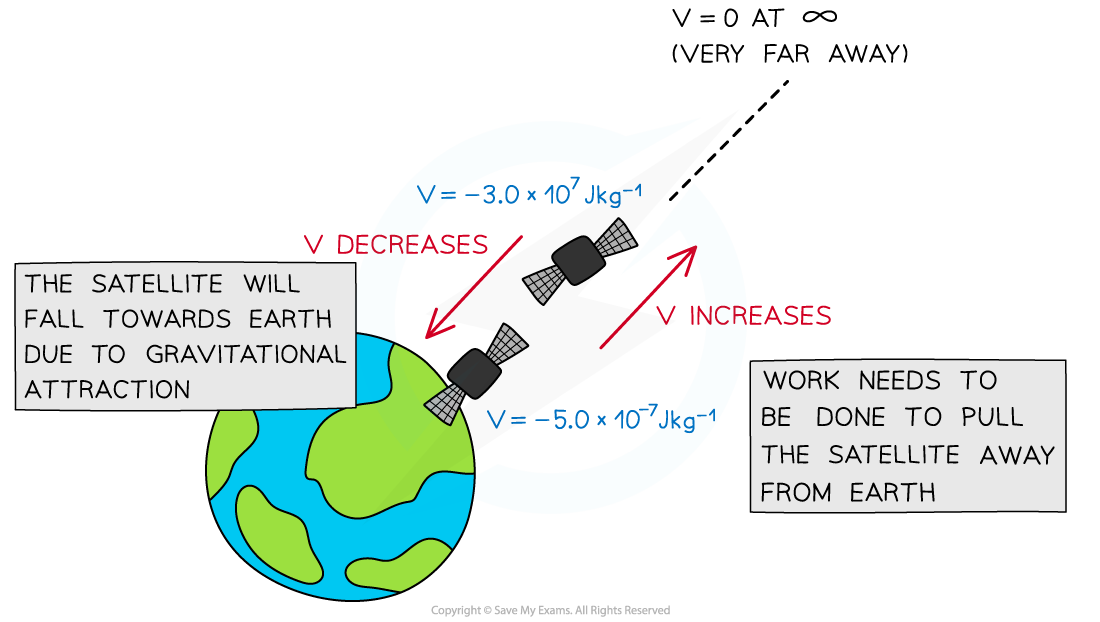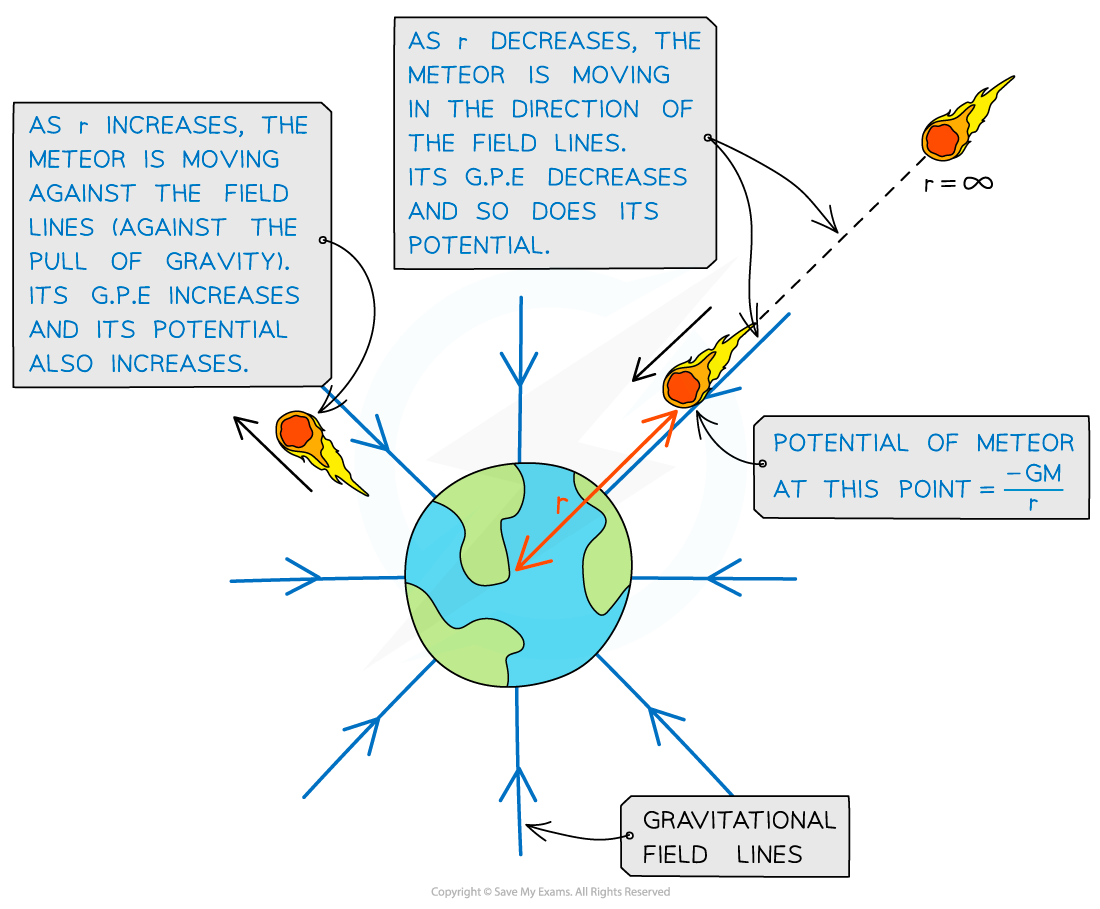Gravitational Potential (DP IB Physics) : Revision Note
Gravitational Potential
The gravitational potential V at a point can, therefore, be defined as:
The work done per unit mass in bringing a test mass from infinity to a defined point
Gravitational potential is measured in J kg−1
It is always has a negative value because:
It is defined as having a value of zero at infinity
Since the gravitational force is attractive, work must be done on a mass to reach infinity
On the surface of a mass (such as a planet), gravitational potential has a negative value
The value becomes less negative, i.e. it increases, with distance from that mass
Work has to be done against the gravitational pull of the planet to take a unit mass away from the planet
The gravitational potential at a point depends on:
The mass of the object
The distance from the centre of mass of the object to the point

Gravitational potential decreases as the satellite moves closer to the Earth
Calculating Gravitational Potential
The equation for gravitational potential V is defined by the mass M and distance r:
Where:
Vg = gravitational potential (J kg−1)
G = Newton’s gravitational constant
M = mass of the body producing the gravitational field (kg)
r = distance from the centre of the mass to the point mass (m)
The gravitational potential always is negative near an isolated mass, such as a planet, because:
The potential when r is at infinity (∞) is defined as zero
Work must be done to move a mass away from a planet (V becomes less negative)
It is also a scalar quantity, unlike the gravitational field strength which is a vector quantity
Gravitational forces are always attractive, this means as r decreases, positive work is done by the mass when moving from infinity to that point
When a mass is closer to a planet, its gravitational potential becomes smaller (more negative)
As a mass moves away from a planet, its gravitational potential becomes larger (less negative) until it reaches 0 at infinity
This means when the distance r becomes very large, the gravitational force tends rapidly towards zero the further away the point is from a planet

Gravitational potential increases and decreases depending on whether the object is travelling towards or against the field lines from infinity
Worked Example
A planet has a diameter of 7600 km and a mass of 3.5 × 1023 kg. A meteor of mass 6000 kg accelerates towards the planet from infinity.
Calculate the gravitational potential of the rock at a distance of 400 km above the planet's surface.
Answer:
The gravitational potential at a point is
Where r is the distance from the centre of the planet to the point i.e. the radius of the planet + the height above the planet's surface
And M is the mass of the larger mass, i.e. the planet (not the meteor)
Examiner Tips and Tricks
Notice the red herring in the worked example. You do not need the mass m of the meteor, as M in the equation for gravitational potential is only the mass of the object creating the gravitational field. m will come into play with gravitational potential energy.

You've read 0 of your 5 free revision notes this week
Sign up now. It’s free!
Did this page help you?
